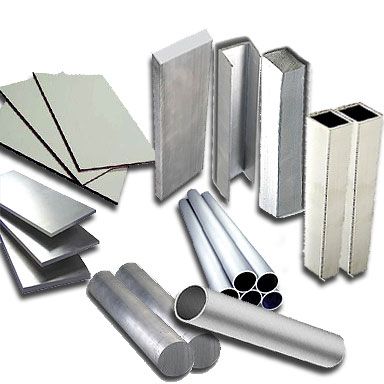


离岸价格
Get Latest Price|
- Minimum Order
国:
UK
モデル番号:
-
离岸价格:
ロケーション:
-
最低注文量の価格:
-
最低注文量:
-
パッケージの詳細:
-
納期:
-
供給能力:
-
支払いタイプ:
-
製品グループ :
連絡先担当者 Mr. Jas Singh
Berkeley Square House, Berkeley Square House, Berkeley Square, Mayfair, London
Description
Aluminium is a relatively soft, durable, lightweight, ductile and malleable metal with appearance ranging from silvery to dull grey, depending on the surface roughness. It is nonmagnetic and does not easily ignite. The yield strength of pure aluminium is 7–*1 MPa, while aluminium alloys have yield strengths ranging from **0 MPa to **0 MPa. Aluminium has about one-third the density and stiffness of steel. It is easily machined, cast, drawn and extruded.
Chemical Structure & Production
Aluminium forms strong chemical bonds with oxygen. Compared to most other metals, it is difficult to extract from ore, such as bauxite, due to the energy required to reduce aluminium oxide (Al2O3). For example, direct reduction with carbon, as is used to produce iron, is not chemically possible because aluminium is a stronger reducing agent than carbon. Indirect carbothermic reduction can be carried out using carbon and Al2O3, which forms an intermediate Al4C3 and this can further yield aluminium metal at a temperature of ***0–***0 °C. This process is still under development; it requires less energy and yields less CO2 than the Hall-Héroult process, the major industrial process for aluminium extraction. Because of the high melting point of aluminium oxide (about 2,**0 °C (3,**0 °F)) the pure metal is extracted by electrolysis. In this process, aluminium oxide is dissolved in molten cryolite with calcium fluoride and then reduced to aluminium at a temperature between **0 and **0 °C (1,**0 to 1,**0 °F). Cryolite is a chemical compound of aluminium and sodium fluorides: (Na3AlF6). Although cryolite is found as a mineral in Greenland, its synthetic form is used in the industry. The aluminium oxide is obtained by refining bauxite in the Bayer process.
Uses & Product Range
Aluminium is the most widely used non-ferrous metal. Aluminium is almost always alloyed, which markedly improves its mechanical properties, especially when tempered. However, it is also used as pure metal when corrosion resistance or workability is more important than strength or hardness. The main alloying agents are copper, zinc, magnesium, manganese, and silicon (e.g., duralumin) and the levels of these other metals are in the range of a few per cent by weight.
Some of the uses for aluminium metal are in:
1. Transportation (as sheets, tubes, castings)
2. Packaging (as cans, foils)
3. Construction (as windows, doors, siding, building wire)
4. Household items (from cooking utensils to baseball bats, watches)
5. Street lighting poles, sailing ship masts, walking poles
6. Outer shells of consumer electronics, cases for equipment
7. Electrical transmission lines for power distribution
8. MKM steel and Alnico magnets
9. Super purity aluminium (SPA) for electronics and CDs
*0. Heat sinks for electronic appliances such as transistors and CPUs
*1. Substrate material of metal-core copper clad laminates used in high brightness LED lighting
*2. Powdered aluminium (used in paint, pyrotechnics such as solid rocket fuels and thermite)
*3. Production of hydrogen gas
| 国: | UK |
| モデル番号: | - |
| 离岸价格: | Get Latest Price |
| ロケーション: | - |
| 最低注文量の価格: | - |
| 最低注文量: | - |
| パッケージの詳細: | - |
| 納期: | - |
| 供給能力: | - |
| 支払いタイプ: | - |
| 製品グループ : | Aluminium |